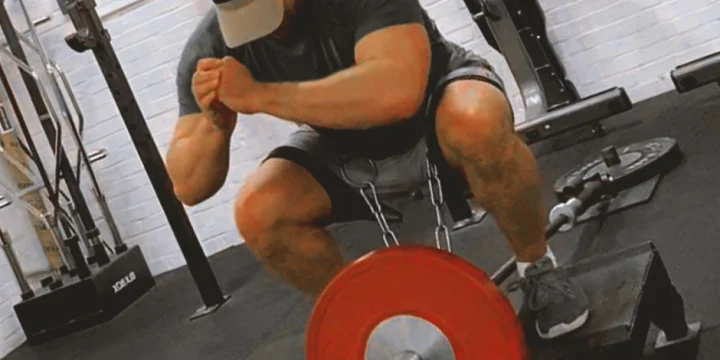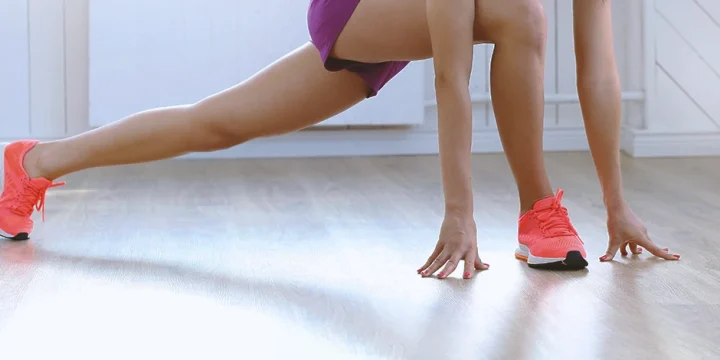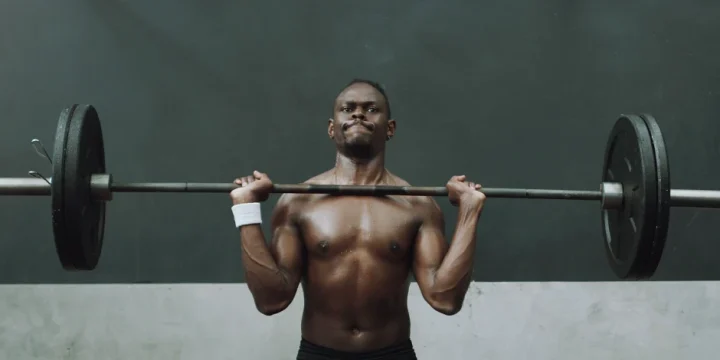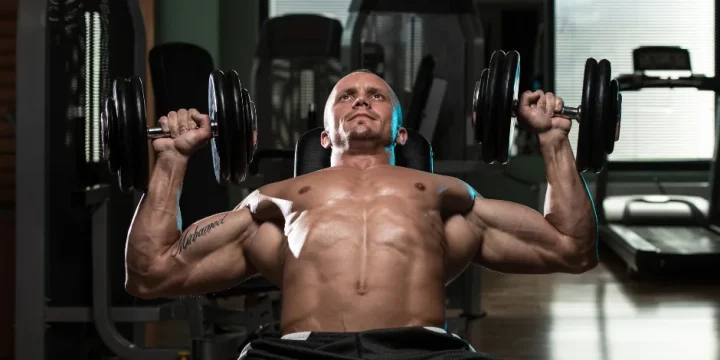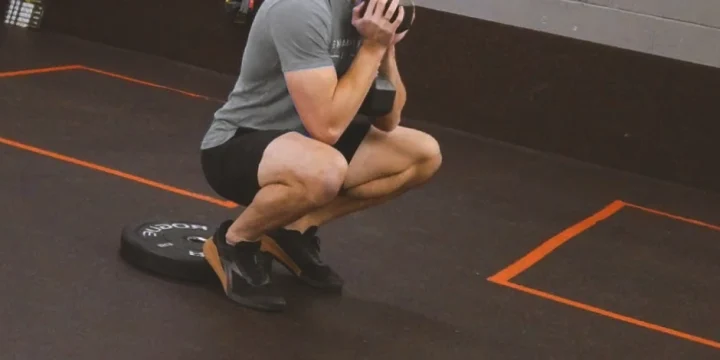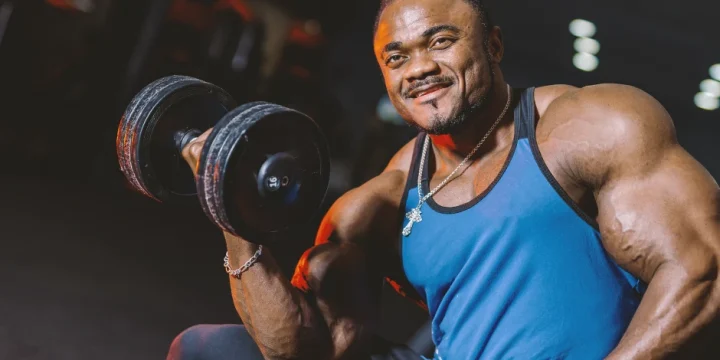Heel touches are great bodyweight exercises that target the abdominal muscles.
As a fitness trainer, I recommend all my readers and clients add heel touches to their exercises to target their obliques and rectus abdominal muscles.
This exercise focuses on all the abdomen's main muscles, thus improving stability and strength.
Keep reading to know the benefits of heel touches and how to perform them with good form.
Quick Summary
- Heel touches are an effective exercise for targeting abdominal muscles, particularly the obliques and rectus abdominis, enhancing core stability and strength.
- Suitable for various fitness levels, heel touches can be performed with or without added resistance, making them a versatile addition to any workout routine.
- Incorporating heel touches into regular workouts can significantly improve core strength and contribute to a more defined waistline.
- In my opinion, heel touches are a simple yet powerful exercise for anyone looking to strengthen their core and improve overall body balance.
How To Perform Heel Touches

Start with 2-3 sets of 12-20 reps for heel touches, adjusting based on your ability to maintain form.
Here's how to do heel touches:
- Locate a flat, suitable surface on which to lie, with your legs straight and arms to the sides. This technique requires no gym gear, but you may use the yoga or exercise mat if you need one.
- Lie on your back with both knees bent, feet flat, and your heels on the floor.
- Squeeze your abdominals, and imagine pulling the belly button into the spine to engage your core. Hold this stance throughout, but remember to breathe.
- Slightly lift your upper back off the floor with your abs and relax your head to avoid straining your neck. This is your neutral position, and where you'll begin.
- While your left hand goes for your left heel, lean to the opposite side of your body. Touch your heel or extend your motion range as far as possible.
- Because these are alternate heel touches, return to the starting position and reach for the right heel on the right side.
- Repeat for the desired number of repetitions.
This workout requires you to devote close attention to your body.
If you experience pain or severe discomfort during the exercise, stop immediately and consult your physician.
What Are Heel Touches?

Heel touches, suitable for beginners to intermediates, can sculpt the waistline and strengthen the core.
"Heel touches are a variation on the basic crunch technique that entail lying down and squeezing muscles in your abdomen to reach out and touch both heels one at a time."
- Andy Griffiths, Expert Personal Trainer
Based on your fitness level, you may execute it with only your body weight or with extra resistance.
Your oblique muscles will tense as you press with each touch as you switch your reach towards the other heel.
You are effectively developing your entire core with each repetition.
The necessity to maintain our stability and balance as we age becomes more important.
Regularly incorporating heel touch exercise into your abdominal workout will help you achieve precisely that.
Muscles Worked by Heel Touches

This bodyweight exercise engages both the front and side obliques (external and internal).
The transverse abdominal muscles are engaged as you lift your shoulders and head.
The rectus abdominis (the six-pack muscles) stay static and contracted throughout the exercise.
Another perk of performing a heel touch is that your hip flexors will be more flexible.
Here's a rundown of the muscles involved:
1. Rectus Abdominis Muscle
The rectus abdominis, known as the "six-pack," is the top layer of the abdominals.
It is made up of two muscle groups that are parallel to each other and flat, divided by connective tissue.
The rectus abdominis is a muscle that passes along the front of the abdomen and looks like a six-pack because it is divided into portions by bands of ligamentous tissue. Abdominal wall muscles also play a significant role in intra-abdominal pressure and provide support for the axial skeleton, as confirmed by the study published on the National Library of Medicine website [1].
The body fat proportion must be relatively low for the six-pack shape to be seen.
The rectus muscles’ primary duties are to aid in core stability, bend the spine forward, and press the abdominal components.
2. Transverse Abdominal Muscles (TVA)
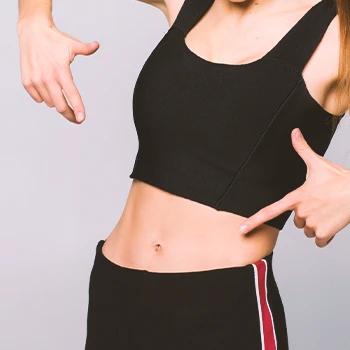
The transverse abdominis runs horizontally, whereas the rectus abdominis runs vertically down the front of the abdomen.
It extends from front to back around the trunk, reaching between the pelvis and ribs.
The transverse abdominis is a dense layer of muscles that runs along the abdominal walls behind the rectus muscles.
These muscles stabilize the lumbar spine by supporting and holding organs [2].
Without these essential muscles, mobility of any limb is nearly impossible.
3. Internal Obliques
This muscle is positioned on the rectus muscles' lateral side, close to the transverse abdominis.
Internal obliques, a thin muscle layer, can work together or individually, as in a hollow grasp.
Additional great functions include assisting in bending and flexing the torso throughout various activities [3].
We frequently focus on the contraction of these muscle groups, but the external and internal obliques also function together to lengthen the trunk.
An illustration of this is a back bend stretch.
Related: Best Oblique Sculpting Exercises
4. External Obliques

This muscle is bigger than the internal obliques and is placed laterally, although more in the frontal area of the rectus muscles.
It is fairly large, extending from the lower ribs to the pelvis [4]. It is difficult to rotate your torso without these muscles. The internal and external obliques work together to facilitate this movement, essential for core stability and various physical activities.
For instance, when the body twists to the right during a Russian twist, the right side internal oblique and left side external oblique contract simultaneously. In my training experience, this simultaneous contraction effectively engages and strengthens these core muscles, enhancing overall core stability and balance.
5. Hip Flexors
Hip flexors are a set of muscles that assist in pulling your feet and trunk together in various ways.
Whether trying to bend the knees to push them in or bowing at the waist to reach the feet, the hip flexors are a bridge to do this [5].
Here are a few hip flexor exercises we've compiled.
Benefits of Heel Touches

Regularly performing this exercise can provide several advantages.
- Heel touch variations can improve your balance and flexibility. Repeating the exercise can enhance your lower back's strength and hip flexor suppleness.
- It develops your core muscles. Heel touches engage most of the primary muscles in your stomach, including your upper and lower abs, transverse abdominis, and rectus abdominis (the six-pack muscle).
- Heel touch exercises are a simple ab workout. The heel touch is an excellent exercise to incorporate into your home fitness program because it requires no equipment.
- Heel touches work the oblique muscles. The obliques are another major muscle group engaged during the heel touch. In contrast to other core exercises, such as crunches and sit-ups, heel touches engage the abdominals on both sides of the body.
Related Articles:
FAQs
Do Heel Touches Slim Your Waist?
Yes, heel touches will slim your waist. The heel touchers compress the entire side abdominal wall while cinching the waist and creating that ideal hourglass shape.
How Effective Are Heel Touches?
Heel touches are very effective as they increase your stability and flexibility. Through repetition, heel touches can improve your lower back's stability and hip flexor flexibility.
How Many Heel Touches a Day?
Begin with 2-3 sets of 12-20 reps on each side for heel touches. Sets and repetitions should be chosen depending on your capacity to sustain proper form during each set.
References:
- https://www.ncbi.nlm.nih.gov/books/NBK537153/
- https://pubmed.ncbi.nlm.nih.gov/2140344/
- https://www.ncbi.nlm.nih.gov/books/NBK551649/
- https://pubmed.ncbi.nlm.nih.gov/10409811/
- https://pubmed.ncbi.nlm.nih.gov/33671271/
About The Author
You May Also Like
